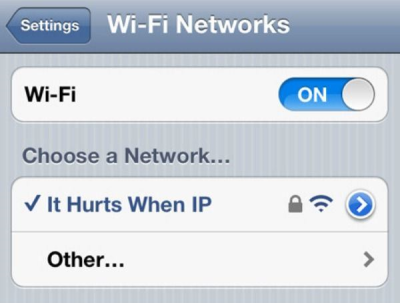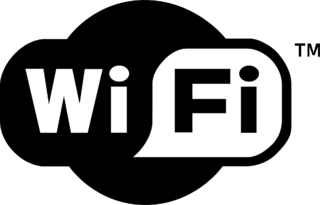Connectivity of the Internet of Things
WiFi
WiFi is one of the most common communication protocols. You probably couldn't imagine your life without it. From the comfort of our homes to classrooms, cafés and airports, we see WiFi everywhere. The extent of WiFi's influence in our lives has been so great that now it harbors a source of good SSID puns like this! (Sometimes, mostly they're bad.)

WiFi essentially uses an infrastructure network, which additionally supports ad-hoc networking in infrastructure mode.
Infrastructure mode of wireless communication provides a bridge to other networks, medium access control and forwarding. The network handling functions are placed into the access point (router), and the clients can remain simple (in context of network).
Also, WiFi is a star-based network. The communication goes from wireless nodes (devices) to a wireless access point (router or network controller).
The current standard being used is 802.11ac, which was released in 2013, although the version 802.11n, which was released in 2009, is still prevalent. The 802.11ac offers speeds up to 800Mbit/s whereas 802.11n offered up to 150Mbits/s.
You might have also seen devices that have even older standards of 802.11a/b/g, which are now called legacy devices. However, since WiFi has downward compatibility, old devices continue to work with devices that have new standards.
The range of your device's WiFi depends on a few factors:
- Which WiFi standard the device is running. The latest standards obviously offer more range than the older versions.
- Physical obstructions like walls also play a critical role in determining the range. Therefore, in open spaces the range of the WiFi network would be more than in enclosed spaces with walls and other interfering objects.
Advantages of WiFi:
- WiFi has a decent range coverage and can penetrate walls and other obstacles in the way.
- Adding and removing devices in a WiFi network is a piece of cake.
Disadvantages of WiFi:
- Obviously, the lack of wires comes at a cost of lower bandwidth. The radio waves of the network might interfere with other equipment.
- Most importantly, security of WiFi is weaker than its wired counterparts
Now thinking about your project, WiFi is ideal when we want to set up a quick connection between our device (should be WiFi compatible) and the internet. WiFi is designed around the goal of keeping its power consumption limited, so you can run your project on a dedicated battery as well. WiFi should be used when you do not care much about how and when exactly your device should connect and communicate with your server and all you are looking for is hassle-free connection to the internet.
SparkFun has a lot of WiFi-based development boards available for you to explore.
**Here are a few project tutorials that walk you through the development of an IoT project using WiFi as a communication protocol: **
